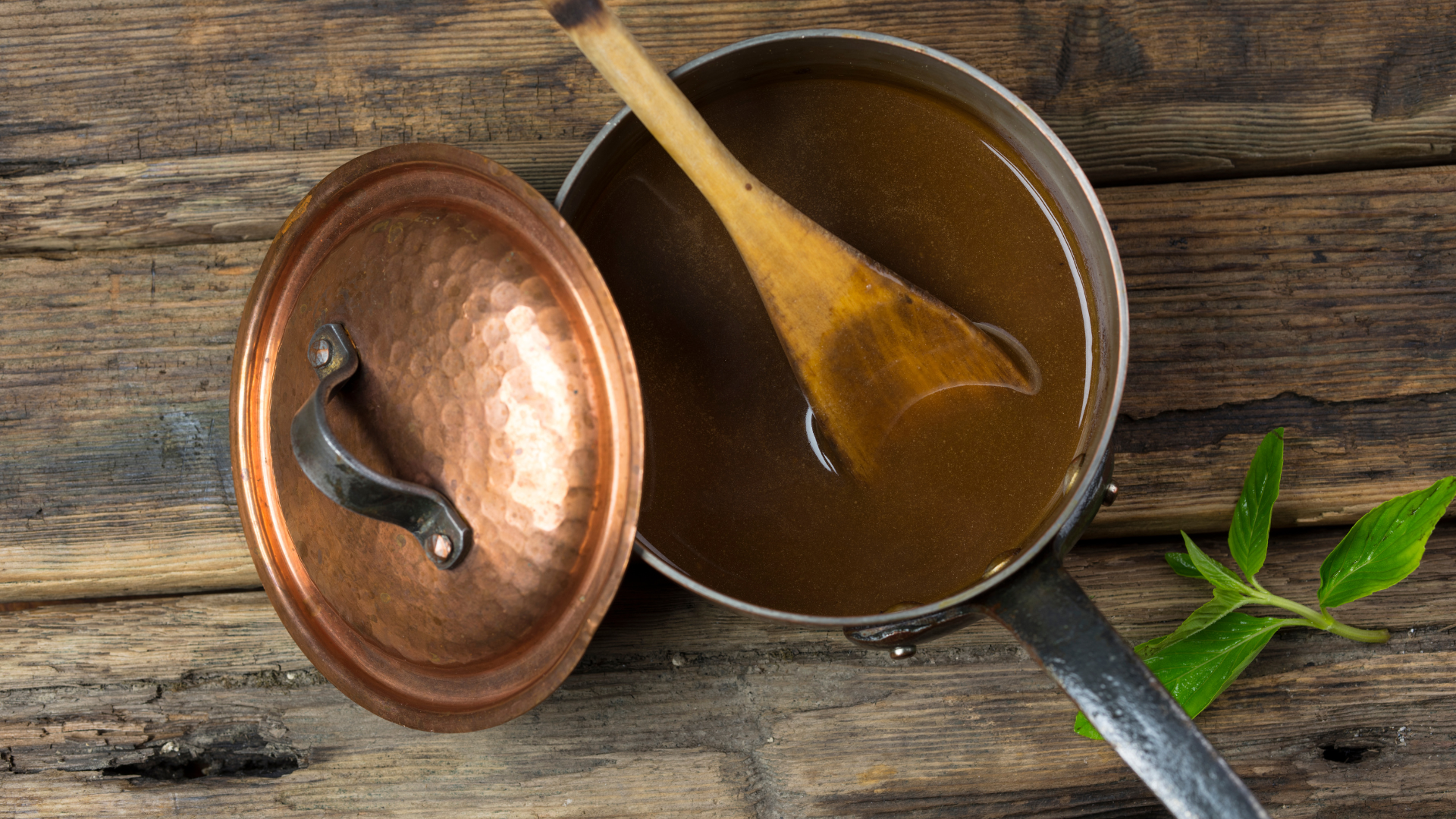French Recipes for Sauces
French cuisine is renowned for its mastery of sauces, often referred to as the "mother sauces" and their derivatives. These sauces are fundamental to French cooking, acting as the backbone of many dishes and elevating the flavor, texture, and presentation. Understanding French sauce culture reveals the heart of classical French cooking.
Developed in the 19th century by French chef Marie-Antoine Carême and later refined by Auguste Escoffier, the "mother sauces" serve as the foundation for a variety of derivative sauces. These are the essential sauces that every French chef learns.
Gravies, or Essences
Brown Gravy (Jus.)
Place five or six onions and an equal number of carrots, both chopped into small pieces, into a saucepan or skillet. Add about two pounds of beef scraps, ensuring no fat is included. Pour in a pint of water, cover the pan, and cook over a high heat.
Once the mixture turns a rich brown, add a bit of boiling water (or broth, if available), a teaspoon of salt, three or four cloves, and a bundle of fresh herbs. Reduce the heat and let the gravy simmer gently for an hour and a half. Periodically pierce the meat with a fork and press it with the back of a spoon to release its juices. Afterward, strain the gravy through a sieve and allow it to settle before using.
You can also enhance the flavor by adding leftover pieces of goose or duck.
White Gravy (Coulis)
Butter the bottom of a saucepan and place two pounds of veal scraps inside. If available, add some leftover cold fowl or turkey. Include two white onions and four or five blades of mace. Pour a pint of boiling water or broth over the mixture, cover the pan, and cook over low heat for five to six hours. During this time, occasionally pierce and press the meat with a fork and spoon to release the juices. Once done, strain the mixture through a sieve. If the liquid is too thin, return it to the heat to simmer until it thickens.
Essence of Game
Take assorted game scraps (such as partridges, pheasants, hares, etc.), along with four calves' feet and a few small pieces of ham. Place everything into a stew pan with half a bottle of white wine, two carrots, two onions, and a bunch of sweet herbs. Simmer gently over low heat for about four hours until the mixture reduces to a jelly-like consistency. To adjust the consistency, add four tablespoons of hot water or broth gradually, stirring gently. Strain the mixture through a sieve, then clarify it by stirring in the slightly beaten whites of three eggs.
To Clarify Gravies, or Essences
To clarify gravies or essences, first strain the gravy through a sieve. Lightly beat the whites of three eggs and stir them into the gravy. Return the mixture to the heat and stir until it reaches a boil. Then, remove it from the heat and let it sit to settle. Afterward, strain it again through a clean cloth or napkin. This process will yield a transparent jelly, perfect for creating high-quality sauces.
Velouté, or Velvet Essence
Take half a pound of scraps of veal, the same quantity of pieces of fowl, and twelve or fifteen mushrooms; stew them slowly in butter, and then add two onions, half a carrot, and a bunch of sweet herbs cut small, three table-spoonfuls of flour, three of boiling water or broth, and salt, pepper, and nutmeg to your taste. Let it stew for an hour and a half, and then strain it.

-
French brown gravy, or jus, is a flavorful sauce often used in French cuisine to complement meats. Here’s a classic recipe for making a rich and savory brown gravy:
Ingredients:
2 tablespoons unsalted butter
2 tablespoons all-purpose flour
1 cup beef broth (preferably homemade or low-sodium)
1 cup red wine (optional; you can substitute with additional beef broth)
1 small onion, finely chopped
2 cloves garlic, minced
1 tablespoon tomato paste
1 bay leaf
1 teaspoon fresh thyme leaves (or 1/2 teaspoon dried thyme)
Salt and freshly ground black pepper to taste
1 tablespoon Worcestershire sauce (optional)
Instructions:
Prepare the Base:
In a medium saucepan, melt the butter over medium heat. Once melted, add the flour. Stir continuously to make a roux, cooking for about 2-3 minutes until the mixture is lightly browned and has a nutty aroma. This step is crucial for thickening the gravy.
Cook the Aromatics:
Add the finely chopped onion to the roux and cook until softened and translucent, about 4-5 minutes. Stir frequently to prevent burning.
Add the minced garlic and cook for another minute until fragrant.
Deglaze and Simmer:
Stir in the tomato paste and cook for 1-2 minutes to incorporate and deepen the flavor.
Gradually whisk in the beef broth and red wine (if using). Bring the mixture to a simmer.
Add Herbs and Seasoning:
Add the bay leaf and thyme to the saucepan. Continue to simmer the gravy for 10-15 minutes, or until it has reduced and thickened to your desired consistency. If you prefer a thicker gravy, let it simmer a bit longer or whisk in a little more flour mixed with water.
Final Touches:
Remove the bay leaf. Season the gravy with salt and freshly ground black pepper to taste. If using, stir in Worcestershire sauce for an extra depth of flavor.
Strain and Serve:
For a smoother gravy, you can strain it through a fine-mesh sieve to remove any solids. Serve hot over your favorite meats or side dishes.
Enjoy your homemade French brown gravy! It’s perfect for enhancing the flavor of roast beef, pork, or even vegetables.
-
Velouté is one of the classic French sauces and is a great base for many other sauces. It's a smooth, creamy sauce made with a light stock (such as chicken, veal, or fish) and a roux. Here’s how to make a basic velouté sauce:
Ingredients:
2 tablespoons unsalted butter
2 tablespoons all-purpose flour
2 cups light stock (chicken, veal, or fish)
Salt to taste
Freshly ground black pepper to taste
A pinch of white pepper (optional)
Instructions:
Make the Roux:
In a medium saucepan, melt the butter over medium heat. Once melted, add the flour. Stir continuously with a whisk or wooden spoon to make a roux. Cook for about 2-3 minutes, until the mixture is smooth and has a slightly nutty aroma. The roux should remain pale in color; avoid letting it brown.
Add the Stock:
Gradually whisk in the stock, ensuring there are no lumps. Continue to whisk constantly to keep the sauce smooth.
Simmer the Sauce:
Bring the mixture to a gentle simmer. Continue to cook, stirring frequently, until the sauce thickens to your desired consistency. This usually takes about 5-7 minutes.
Season the Sauce:
Season with salt and freshly ground black pepper. If desired, add a pinch of white pepper for a slightly different flavor.
Finish and Serve:
Remove from heat. The velouté sauce is now ready to use. It can be served as is, or you can enrich it further with additional flavors or ingredients as needed.
Tips:
Stock Choice: The type of stock you use will influence the flavor of your velouté. Chicken stock is the most common, but veal or fish stock can be used depending on the dish you're preparing.
Smooth Sauce: For a perfectly smooth sauce, strain it through a fine-mesh sieve to remove any potential lumps.
Velouté is a foundational sauce that can be used as a base for many other sauces, such as mushroom sauce (by adding sautéed mushrooms) or cream sauce (by incorporating cream). Enjoy experimenting with it in your dishes!
Sauces
When finishing sauces with eggs, use only the yolks. First, mix the yolks with just a spoonful or two of the sauce off the heat. Then return the pan to the stove and heat gently for a few moments. Be careful not to let the sauce boil once the eggs are added.
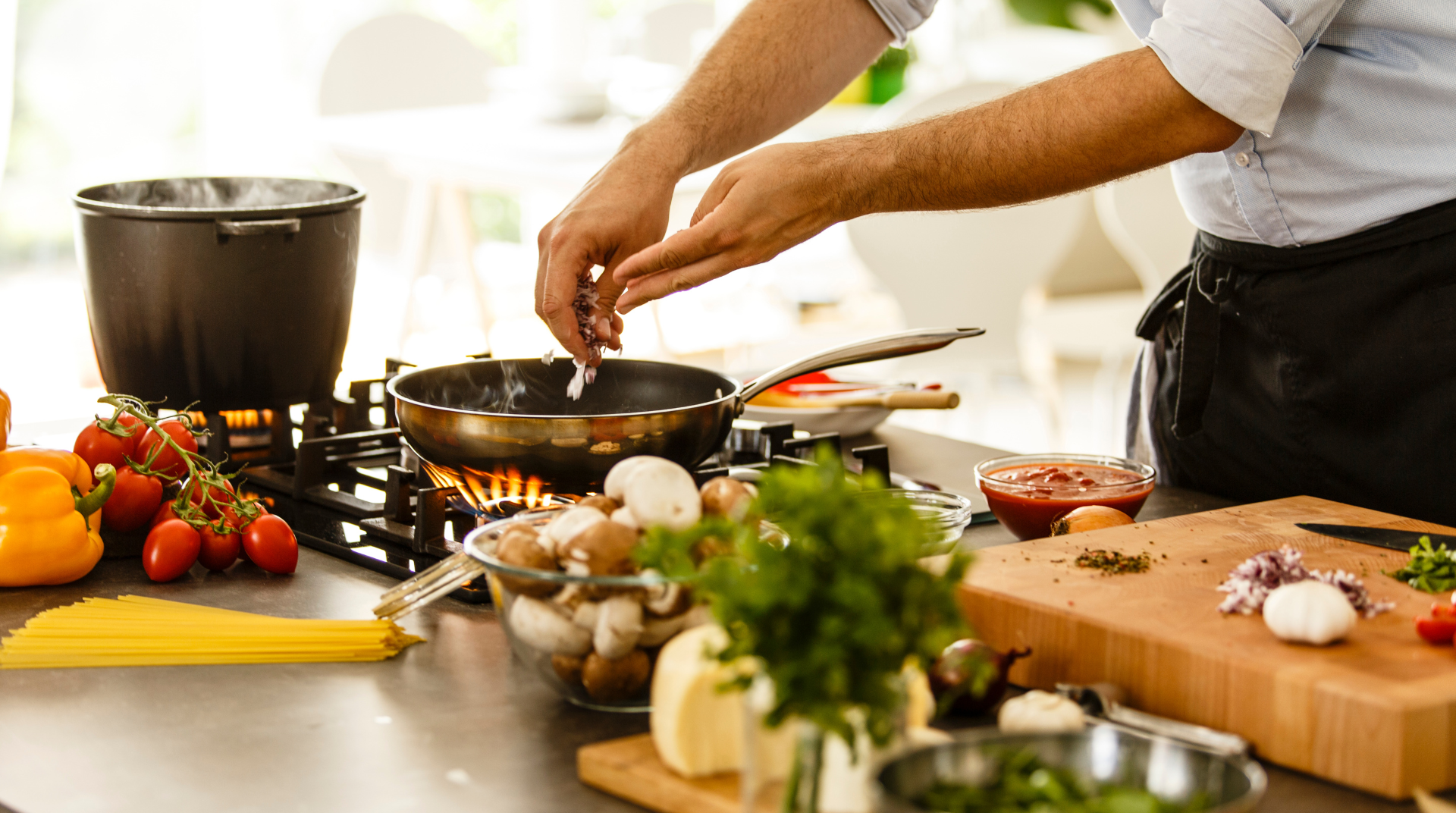
Universal Sauce
Take a pint of quality broth or drawn butter and stir in a glass of white wine and the grated zest of half a lemon. Add a bay leaf or two to three peach leaves and a spoonful of vinegar. Let the mixture simmer gently on a bed of coals or hot ashes for five to six hours, or longer if desired. This sauce is excellent for drizzling over meat, poultry, or fish and can be stored for several days in a cool place.
Béchamel
In a saucepan, combine a quarter pound of butter with a sprinkle of flour. Add three or four finely chopped onions, a small diced carrot, a little parsley, and a dozen mushrooms. Place the saucepan over heat and melt the butter. Once melted, mix in three tablespoons of flour combined with a pint of cream or rich milk, seasoned with salt, pepper, and nutmeg to taste. Stir continuously until the mixture reaches a boil. Then, reduce the heat and let the béchamel simmer gently for about 45 minutes. Once it's done, strain the sauce and stir in the yolks of three eggs.
Another Béchamel
Dice half a pound of bacon or ham, a carrot, a turnip, and two onions. Place these into a saucepan with two tablespoons of veal dripping, a bit of butter (around two ounces), and two tablespoons of flour. Pour in boiling water or broth to moisten the mixture. Season with nutmeg, cloves, thyme, parsley, salt, pepper, and a bay leaf. Allow it to simmer for one hour. Once cooked, strain the mixture and add a squeeze of lemon juice before serving.
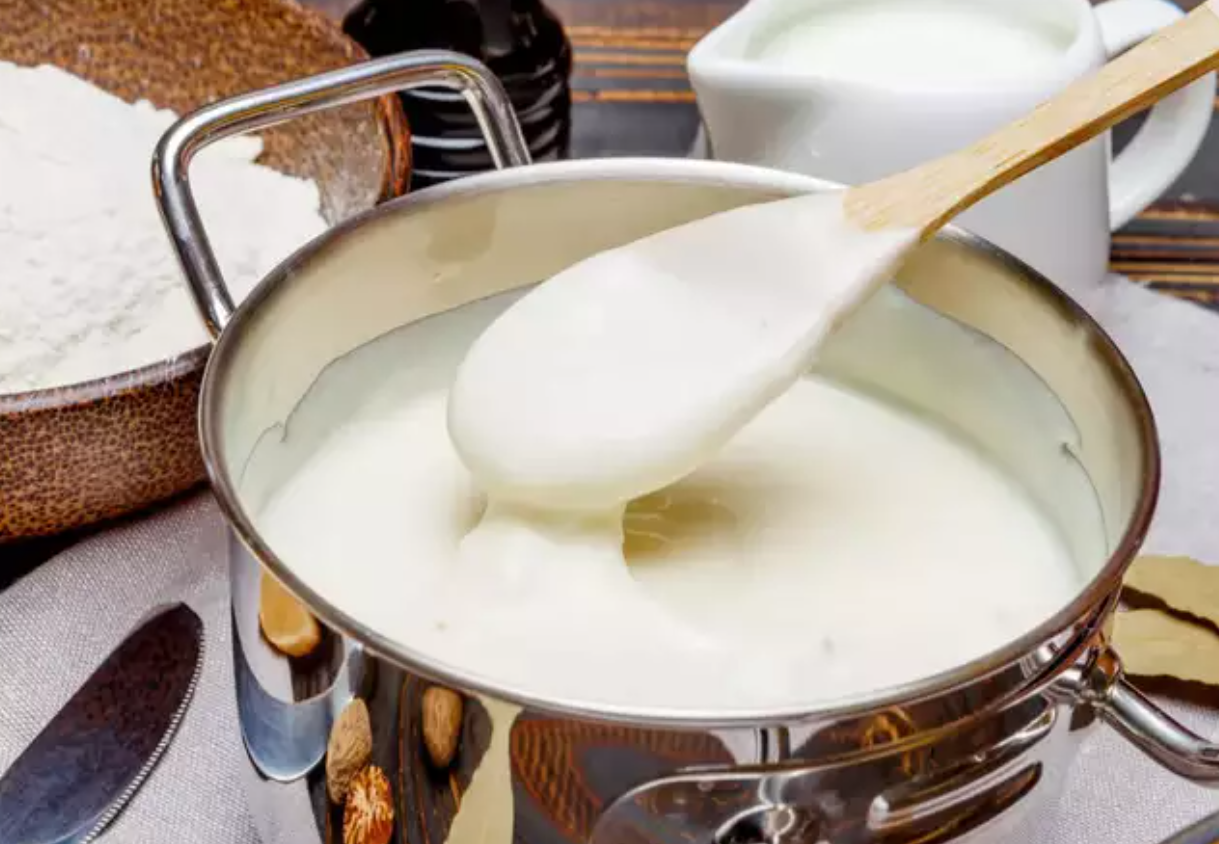
-
Béchamel is one of the classic "mother sauces" in French cuisine. It's a creamy, white sauce that's often used as a base for other sauces or in dishes like lasagna and macaroni and cheese. Here’s a basic recipe for making béchamel:
Ingredients:
2 tablespoons unsalted butter
2 tablespoons all-purpose flour
2 cups whole milk
Salt, to taste
White or black pepper, to taste
A pinch of ground nutmeg (optional)
Instructions:
Melt the Butter:
In a medium saucepan, melt the butter over medium heat.
Make the Roux:
Once the butter is melted and bubbling, add the flour. Stir continuously with a whisk or wooden spoon to create a smooth paste. Cook for about 1-2 minutes, but don’t let it brown; this is called a roux.
Add the Milk:
Gradually add the milk to the roux, whisking constantly to avoid lumps.
Cook the Sauce:
Continue to cook the mixture over medium heat, whisking frequently. The sauce will start to thicken as it heats. This usually takes about 5-7 minutes.
Season:
Once the sauce has thickened to your desired consistency, season it with salt, pepper, and a pinch of nutmeg if using.
Serve or Use:
Your béchamel sauce is now ready to be used! It can be served immediately or used as a base for other recipes.
Tips:
Consistency: If the sauce is too thick, you can thin it out with a little more milk. If it’s too thin, let it cook a bit longer to thicken up.
Prevent Lumps: Whisking constantly while adding the milk helps prevent lumps. If you do end up with lumps, you can use an immersion blender to smooth it out.
Feel free to adjust the seasoning to your taste, and you can also add cheese to make a Mornay sauce or other variations!
Drawn Butter
In a small pan, combine a tablespoon of flour with a tumbler of water, adding salt and pepper to taste. Stir the mixture until it reaches a boil. Remove from heat, then incorporate two ounces of butter and a few drops of cold water, along with a splash of lemon juice or vinegar. Keep the sauce warm on the stove or near the fire until needed.
For added thickness, you can mix in finely chopped mushrooms while it's boiling, or, once it's done, stir in finely chopped hard-boiled eggs, pickled cucumbers, or capers.
Melted Butter - Another Way
Put into a sauce-pan a quarter of a pound of butter. When quite melted over the fire, throw in a large spoonful of flour, and add a half pint of boiling water, and salt to your taste. Boil it for a few minutes, and then put in a teaspoonful of cold water. If intended as sauce for a pudding, stir in at the end a glass of white wine, and half a grated nutmeg.
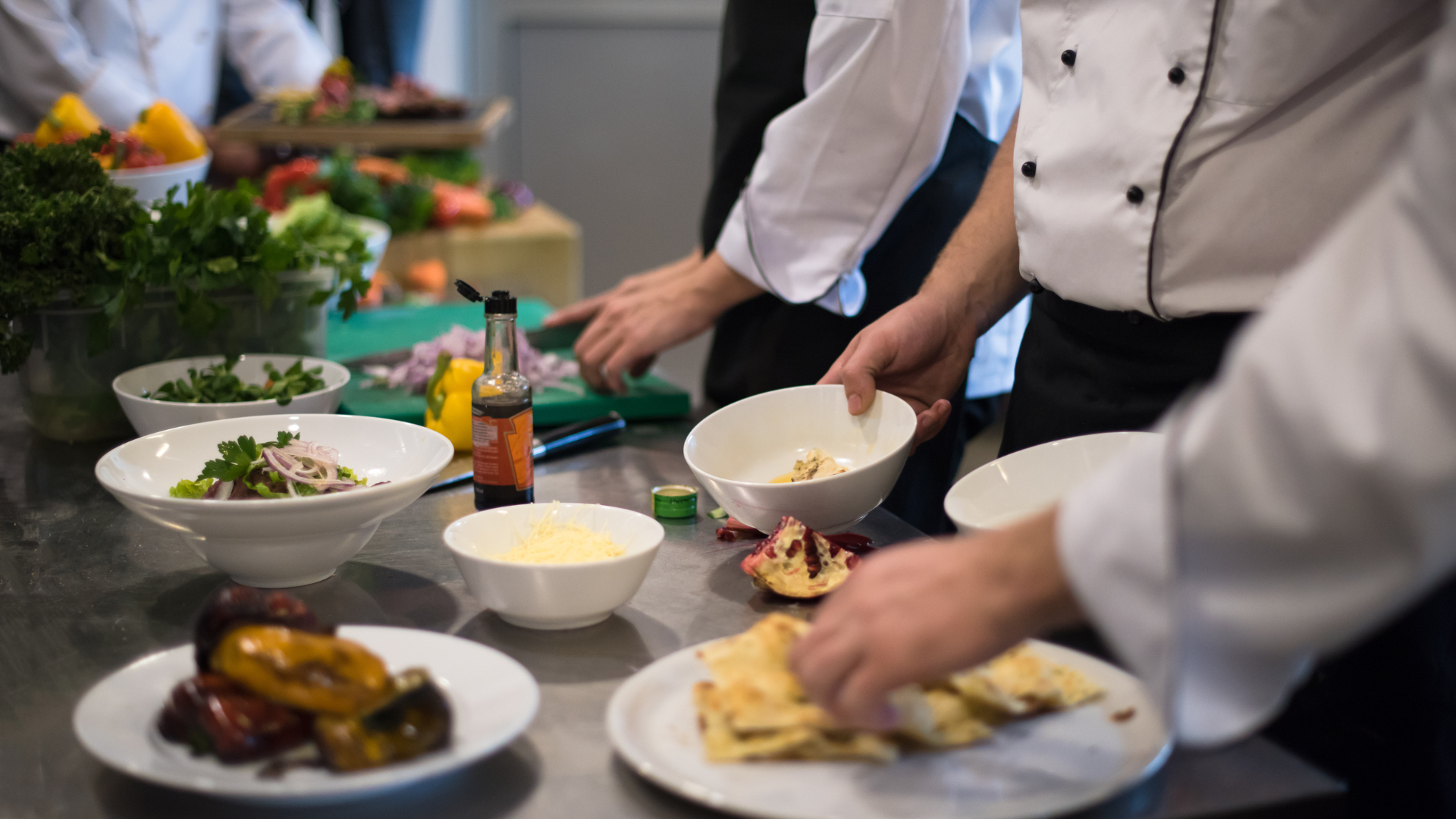
-
Here’s a classic recipe for French Drawn Butter, also known as "Beurre Blanc":
French Drawn Butter Recipe
Ingredients:
1 cup (2 sticks) unsalted butter
1 small shallot, finely minced
1/2 cup dry white wine
1/4 cup white wine vinegar or lemon juice
Salt, to taste
White pepper, to taste
Instructions:
Prepare the Shallots:
In a small saucepan over medium heat, add a bit of butter (about 1 tablespoon) and the finely minced shallot.
Cook until the shallot is softened and translucent, but not browned, about 2-3 minutes.
Deglaze and Reduce:
Add the white wine and white wine vinegar (or lemon juice) to the pan.
Increase the heat slightly and let it simmer until the liquid is reduced by about half, approximately 5-7 minutes.
Incorporate the Butter:
Reduce the heat to low. Gradually whisk in the remaining butter, a few pieces at a time, allowing each addition to melt and integrate fully before adding more.
Continue whisking until all the butter is incorporated and the sauce is smooth and slightly thickened.
Season and Serve:
Season the sauce with salt and white pepper to taste.
Serve immediately over your choice of fish, seafood, or vegetables.
Note: French Drawn Butter is best served fresh. If you need to hold it for a short period, keep it warm on very low heat, but avoid letting it sit too long as it can separate. If it does separate, you can whisk it back together over low heat.
Vegetable Sauce (for Asparagus and More)
Mash the yolks of three hard-boiled eggs on a plate using the back of a wooden spoon. Combine them with three tablespoons of vinegar, a finely minced shallot or small onion, a pinch of salt, and a dash of Cayenne pepper. Stir in three tablespoons of olive oil and mix everything thoroughly.
Pungent Sauce (Sauce Piquant)
In a saucepan, combine half a pint of vinegar with a sprig of thyme, two or three sprigs of sweet marjoram, a bay leaf, a clove of garlic, a shallot (or a small onion), and season with Cayenne pepper and salt to taste. Add a glass of broth or gravy. Simmer the mixture slowly until it reduces to about two-thirds of its original volume, then strain it.
Anchovy Sauce - for Fish
Chop the flesh of three anchovies into small pieces and soak them in vinegar for at least half an hour. After soaking, finely mince the anchovies and place them in a saucepan with a bit of butter coated in flour. Season with pepper and mustard to taste. Add enough vinegar to cover the mixture and let it simmer gently for about 15 minutes. Strain the sauce and squeeze in a little lemon juice before serving.

-
A classic French anchovy sauce, often used with fish, is typically a variation of a "sauce aux anchois" or anchovy butter. Here's a simple and delicious recipe you can try:
Ingredients:
6 anchovy fillets (preferably packed in oil, drained)
2 tablespoons unsalted butter (softened)
1 tablespoon olive oil
1 clove garlic, minced
1 tablespoon fresh lemon juice
2 tablespoons chopped fresh parsley
1 tablespoon capers, rinsed and chopped (optional)
Salt and freshly ground black pepper, to taste
Instructions:
Mash Anchovies:
Finely chop the anchovy fillets or mash them with the side of a knife to form a paste.
Prepare Garlic:
In a small pan, heat the olive oil over medium heat. Add the minced garlic and cook for about 1 minute until fragrant but not browned.
Combine Ingredients:
In a bowl, mix the softened butter with the anchovy paste until well combined. Add the garlic-infused olive oil, lemon juice, and chopped parsley. If you're using capers, add them as well.
Season:
Season the mixture with salt and freshly ground black pepper to taste. Be cautious with the salt, as the anchovies can be quite salty.
Serve:
Spoon the anchovy butter over cooked fish just before serving, or serve it on the side. It pairs beautifully with grilled, pan-seared, or baked fish.
Tips:
For a smoother sauce: You can blend the anchovy paste with the softened butter using a food processor.
Variation: Add a pinch of red pepper flakes for a bit of heat or a teaspoon of Dijon mustard for extra depth of flavor.
Enjoy your meal! This sauce adds a rich, savory depth that complements a variety of fish dishes wonderfully.
Curry Sauce
In a saucepan, melt two ounces of butter and add a tablespoonful of curry powder (or powdered turmeric if preferred), half a grated nutmeg, half a spoonful of saffron, and two spoonfuls of flour. Pour in enough boiling water or broth to cover the mixture and let it simmer for 15 minutes. Strain the sauce, stir in a little additional butter, and serve.
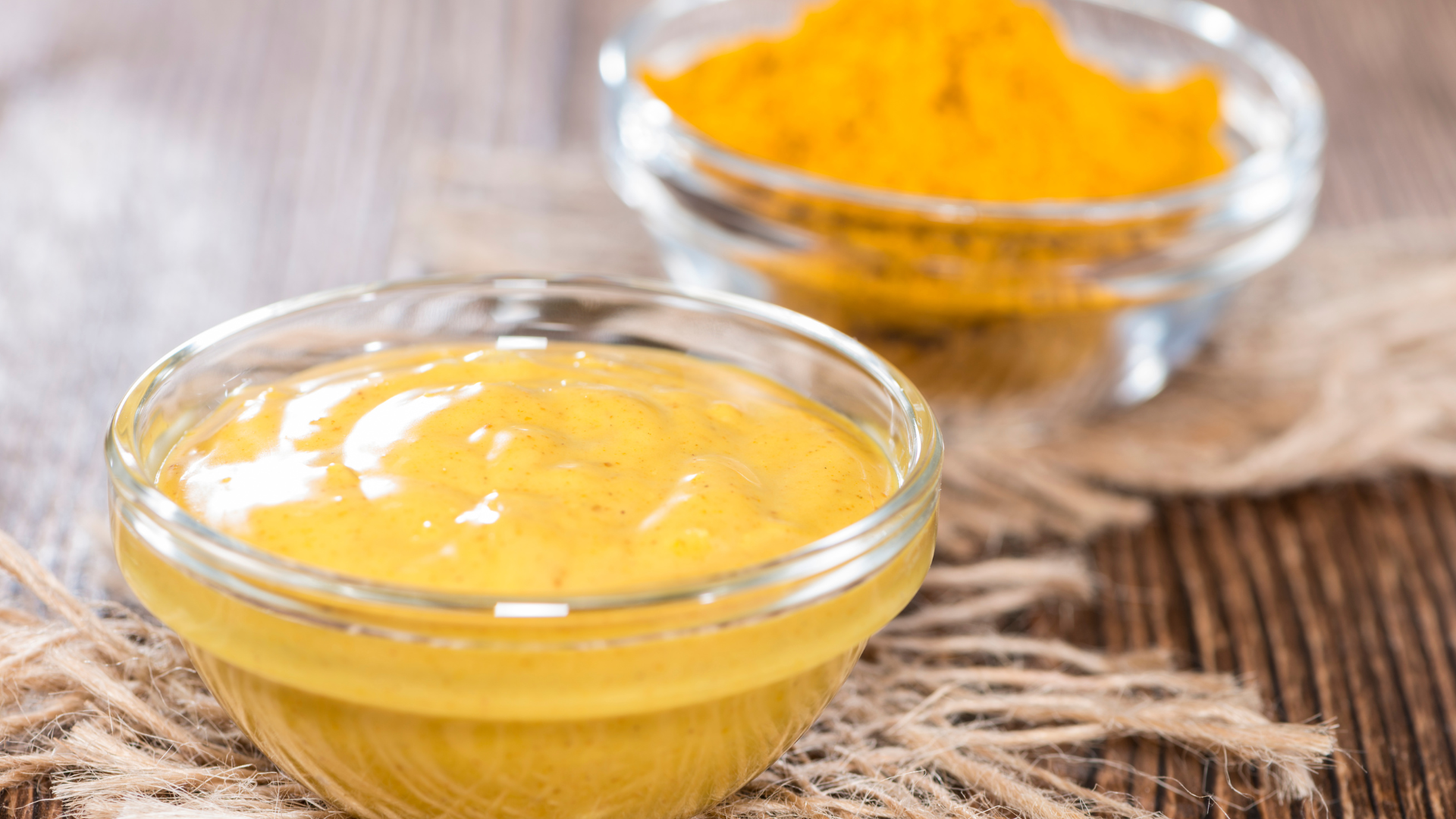
-
French curry sauce is a delightful fusion of French culinary techniques with the warm, aromatic flavors of curry. It's versatile and can be used with a variety of dishes, including chicken, seafood, or vegetables. Here’s a straightforward recipe you can try:
French Curry Sauce
Ingredients:
2 tablespoons unsalted butter
1 medium onion, finely chopped
2 cloves garlic, minced
1 tablespoon all-purpose flour
1 tablespoon curry powder (adjust to taste; use a mild or hot curry powder depending on your preference)
1 cup chicken or vegetable broth
1 cup heavy cream
1 tablespoon tomato paste
1 teaspoon Dijon mustard (optional, for extra tanginess)
Salt and freshly ground black pepper, to taste
Chopped fresh parsley or chives for garnish (optional)
Instructions:
Sauté Onions and Garlic:
In a medium saucepan, melt the butter over medium heat. Add the chopped onion and cook until soft and translucent, about 5 minutes. Add the minced garlic and cook for an additional minute until fragrant.
Make the Roux:
Stir in the flour and cook for about 1-2 minutes to form a roux, which will help thicken the sauce.
Add Curry Powder:
Sprinkle in the curry powder and cook for another minute, stirring constantly, to release its flavors.
Add Liquids:
Gradually whisk in the chicken or vegetable broth, making sure there are no lumps. Bring the mixture to a simmer.
Incorporate Cream and Tomato Paste:
Stir in the heavy cream and tomato paste. Continue to simmer the sauce for about 5-7 minutes, until it has thickened to your desired consistency.
Season:
Stir in the Dijon mustard if using, and season with salt and freshly ground black pepper to taste.
Garnish and Serve:
Garnish with chopped parsley or chives if desired. Serve the curry sauce over your choice of meat, seafood, or vegetables.
Tips:
Consistency: If you prefer a thicker sauce, let it simmer longer. For a thinner sauce, you can add a bit more broth or cream.
Spice Level: Adjust the amount of curry powder based on your heat preference. You can also add a pinch of cayenne pepper for extra heat.
This French curry sauce is rich and creamy with a fragrant curry flavor, making it a great addition to many dishes.

Tomato Sauce
Bake ten tomatoes seasoned with pepper and salt until they break down into a marmalade-like consistency. Then stir in a bit of flour or grated breadcrumbs and a splash of broth or hot water. Simmer gently for ten minutes. Before serving, mix in two ounces of butter and let it melt into the sauce.
See also the tomato sauce in the version of 5 Mother Sauces
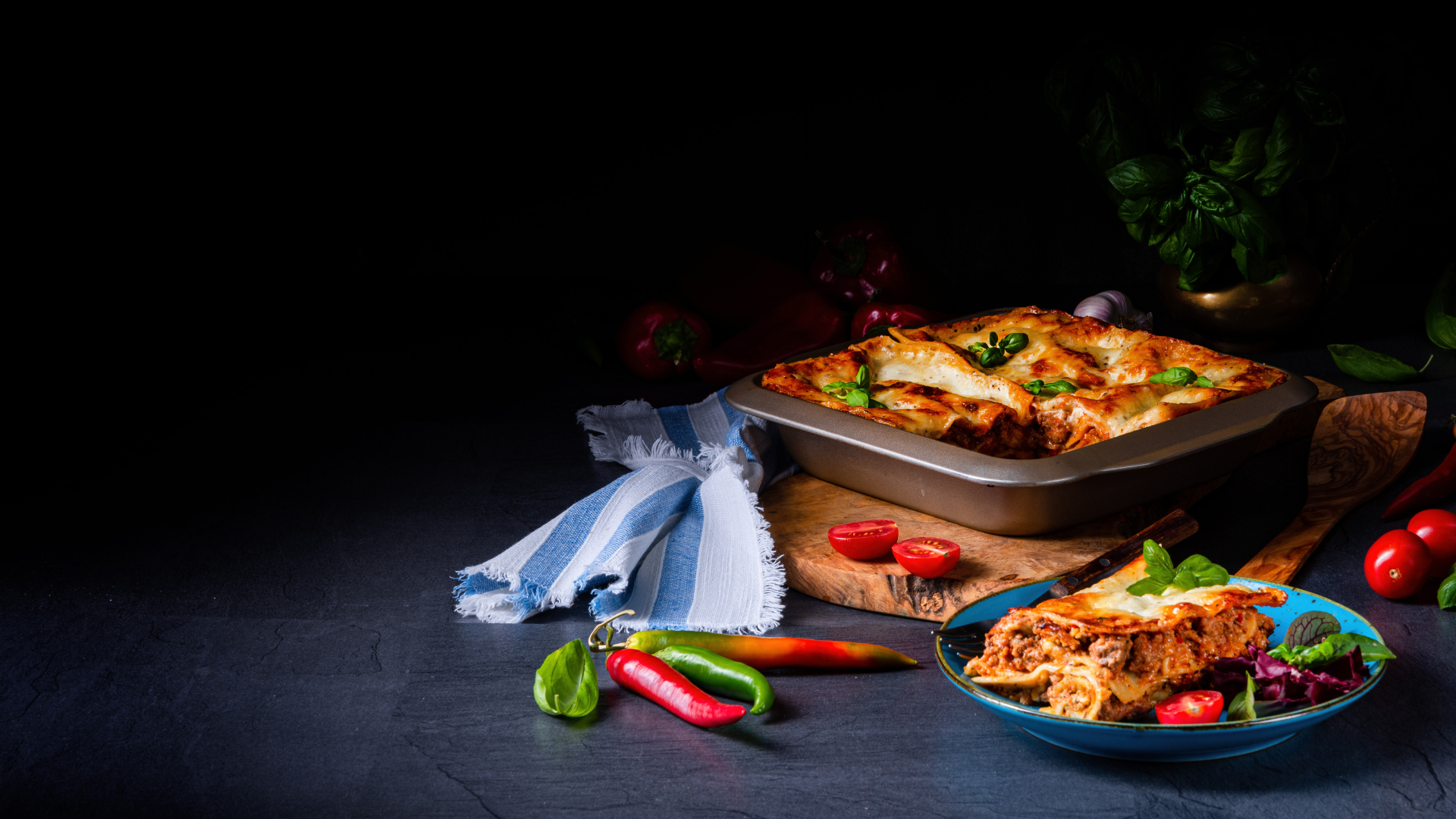
-
French Tomato Sauce
Known as “sauce tomate” or “sauce au tomate,” is a staple in French cuisine. It’s versatile and can be used in a variety of dishes, from pasta to braised meats. Here’s a simple and authentic recipe for a French tomato sauce:
Ingredients:
2 tablespoons olive oil
1 medium onion, finely chopped
2 cloves garlic, minced
1 medium carrot, finely chopped
1 celery stalk, finely chopped
1 (14.5-ounce) can crushed tomatoes (or use 2 cups of fresh tomatoes, peeled and chopped)
1 tablespoon tomato paste
1/2 cup dry white wine (optional)
1 bay leaf
1 teaspoon dried thyme or 1 tablespoon fresh thyme (chopped)
1 teaspoon dried basil or 1 tablespoon fresh basil (chopped)
1 teaspoon sugar (optional, to balance acidity)
Salt and freshly ground black pepper, to taste
Chopped fresh parsley or basil for garnish (optional)
Instructions:
Sauté Aromatics:
Heat the olive oil in a large skillet or saucepan over medium heat. Add the chopped onion, carrot, and celery. Cook until the vegetables are softened and the onion is translucent, about 7-10 minutes. Add the minced garlic and cook for another minute until fragrant.
Add Tomato Paste:
Stir in the tomato paste and cook for 1-2 minutes to deepen its flavor.
Deglaze with Wine (Optional):
If using white wine, pour it into the pan, scraping up any bits stuck to the bottom. Let the wine simmer until reduced by half.
Add Tomatoes and Seasonings:
Add the crushed tomatoes to the pan. Stir in the bay leaf, thyme, basil, and sugar (if using). Season with salt and freshly ground black pepper to taste.
Simmer:
Bring the sauce to a gentle simmer. Reduce the heat to low and let it cook for about 20-30 minutes, stirring occasionally, until it has thickened and the flavors have melded together. Adjust seasoning as needed.
Finish and Serve:
Remove the bay leaf before serving. Garnish with chopped fresh parsley or basil if desired.
Tips:
For a smoother sauce: Blend the sauce with an immersion blender or in a regular blender until smooth.
For a richer flavor: You can add a splash of heavy cream at the end of cooking for a creamy version.
This French tomato sauce is perfect for pasta, as a base for stews, or even as a topping for baked dishes. Enjoy your cooking!
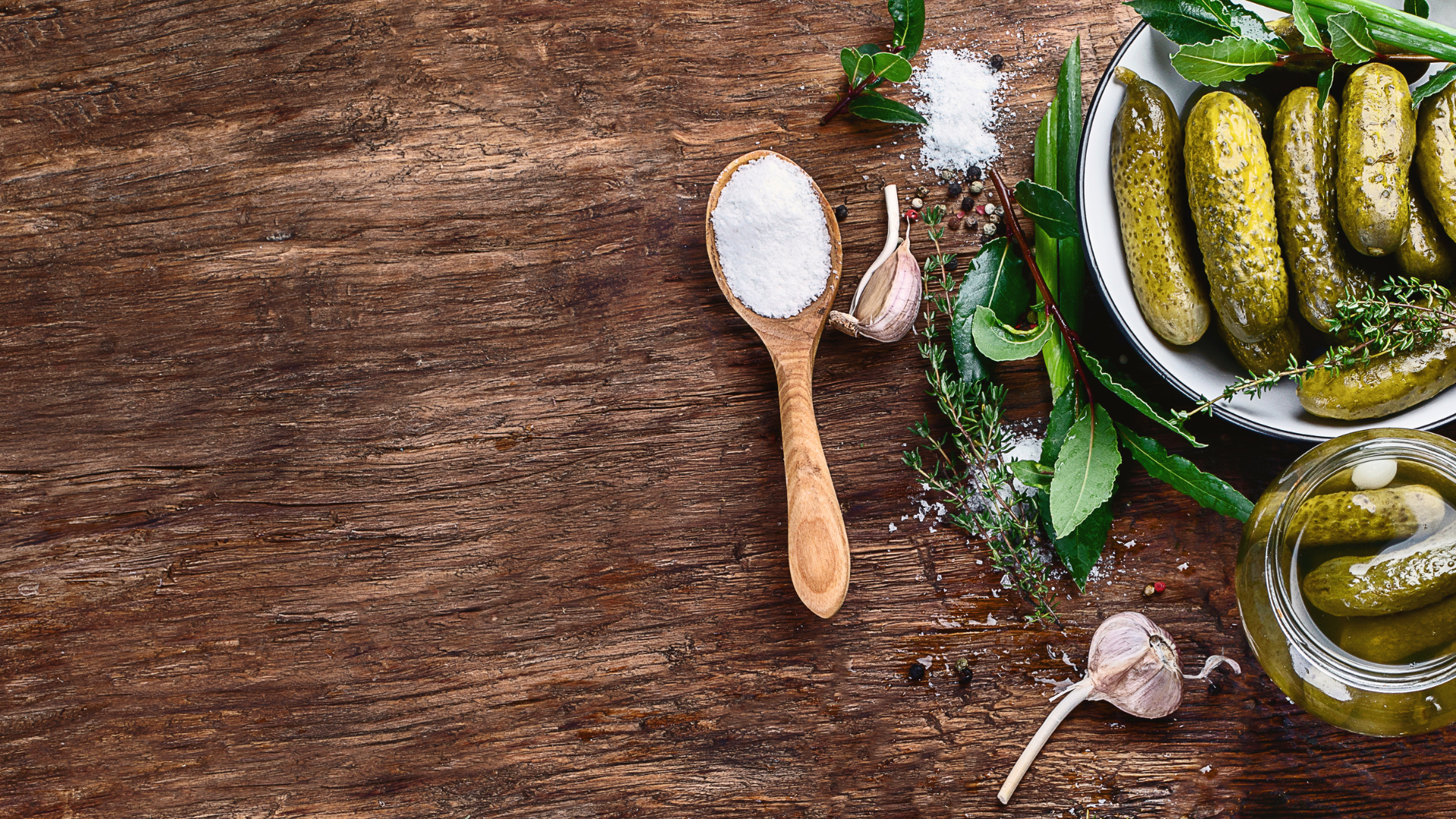
Pickled Cucumber Sauce
Place a pat of butter coated in flour into a saucepan, along with some salt, pepper, and one or two finely minced pickled cucumbers. Add boiling water to moisten the mixture. Allow it to simmer gently for a few minutes before serving.
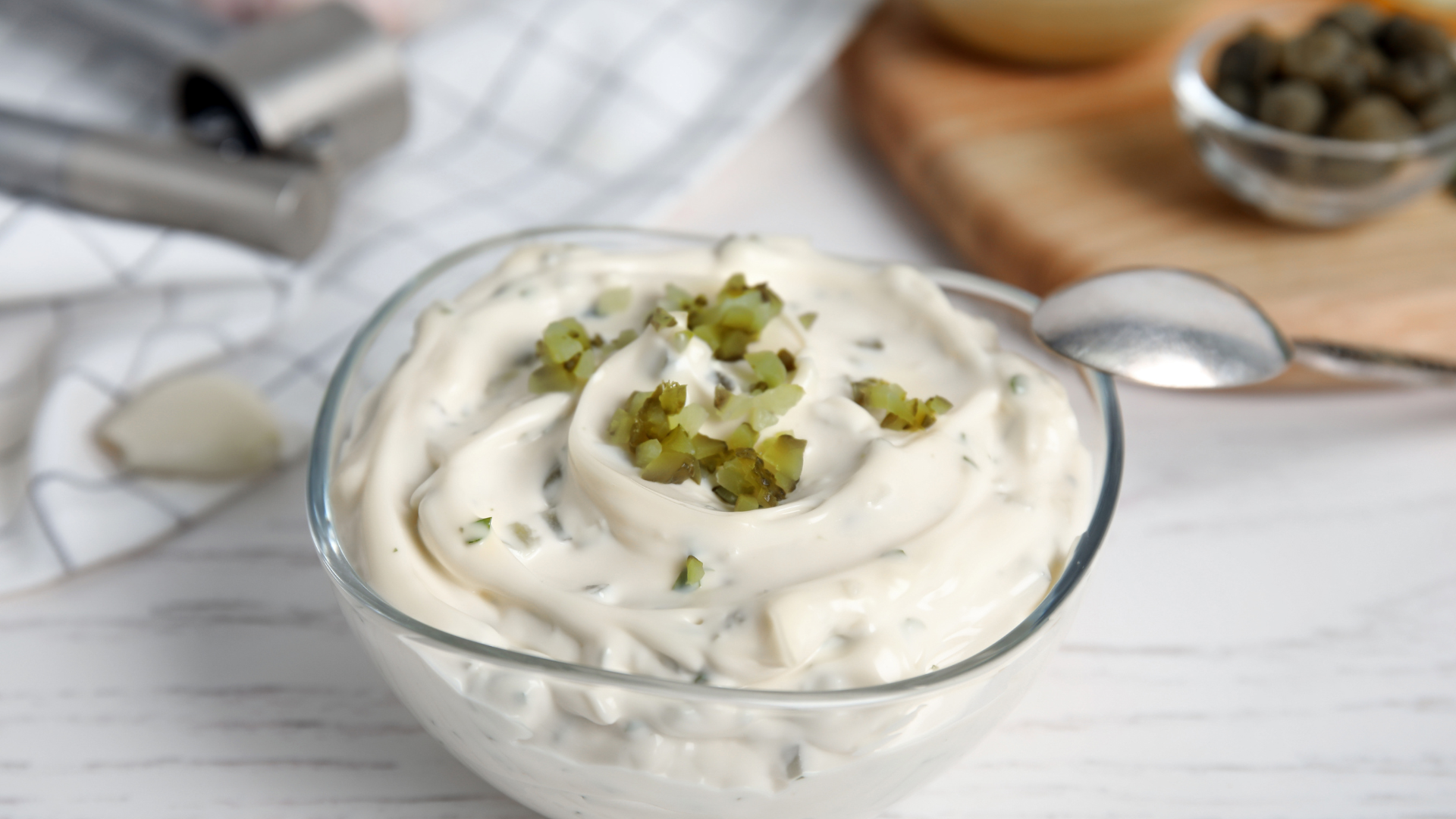
-
French pickled cucumber sauce, also known as "cornichon sauce" or "sauce aux cornichons," is a tangy and flavorful accompaniment often used to enhance meats and sandwiches. Here’s a recipe you might enjoy:
French Pickled Cucumber Sauce Recipe
Ingredients:
1 cup mayonnaise
1/2 cup sour cream
1/4 cup Dijon mustard
1/4 cup finely chopped cornichons (or dill pickles)
2 tablespoons capers, drained and chopped
2 tablespoons fresh parsley, finely chopped
1 tablespoon lemon juice
1 small garlic clove, minced
Salt and pepper, to taste
Instructions:
Prepare Ingredients:
Finely chop the cornichons and capers. Mince the garlic.
Combine Ingredients:
In a medium bowl, mix together the mayonnaise and sour cream until smooth.
Stir in the Dijon mustard, chopped cornichons, capers, parsley, lemon juice, and minced garlic.
Season and Adjust:
Taste the sauce and add salt and pepper as needed. You might also adjust the lemon juice or mustard to suit your taste.
Chill:
Cover the bowl and refrigerate the sauce for at least 30 minutes to let the flavors meld together.
Serve:
Serve chilled as a dip, or as a sauce for meats, sandwiches, or even as a dressing for salads.
Feel free to customize the sauce by adjusting the amount of cornichons or capers based on your preference for tanginess. Enjoy your homemade French pickled cucumber sauce!

Lobster Sauce
After boiling the lobster, remove the meat from the shell and mash it in a mortar. Pass the mashed meat through a colander or sieve to ensure a smooth texture. Place it in a saucepan with a spoonful of velouté (or velvet essence) and a spoonful of broth.
Mix thoroughly, then add a piece of butter, some salt, and a pinch of Cayenne pepper. Simmer the mixture for ten minutes, then serve it alongside boiled fresh fish.

-
French Lobster Sauce, or Sauce au Homard, is a luxurious and flavorful sauce often used to enhance lobster dishes or other seafood. It combines the richness of lobster with a creamy, aromatic base.
French Lobster Sauce (Sauce au Homard)
Ingredients:
- 2 lobster tails (or 1 whole lobster, if preferred), cooked and shells reserved
- 2 tablespoons unsalted butter
- 1 small shallot, finely chopped
- 1 small carrot, finely chopped
- 1 celery stalk, finely chopped
- 1 garlic clove, minced
- 1/2 cup dry white wine
- 1 cup lobster stock (or fish stock if lobster stock is not available)
- 1/2 cup heavy cream
- 1 tablespoon tomato paste
- 1 tablespoon brandy or cognac (optional)
- 1 teaspoon fresh lemon juice
- Salt and freshly ground black pepper, to taste
- 1 tablespoon finely chopped fresh parsley (for garnish)
Instructions:
1. Prepare Lobster Shells:
- If using lobster tails, remove the meat from the shells and set it aside. Crush the lobster shells slightly to release their flavor. If using a whole lobster, break the shell into pieces.
2. Sauté Vegetables:
- In a large skillet or saucepan, melt the butter over medium heat. Add the finely chopped shallot, carrot, and celery. Sauté until the vegetables are soft and lightly caramelized, about 5-7 minutes.
3. Add Garlic and Tomato Paste:
- Add the minced garlic and tomato paste to the vegetables, cooking for an additional 1-2 minutes until the garlic is fragrant and the tomato paste has darkened slightly.
4. Deglaze with Wine:
- Pour in the white wine, stirring to deglaze the pan and scrape up any browned bits. Bring to a simmer and cook until the wine is reduced by half, about 3-4 minutes.
5. Add Lobster Stock:
- Stir in the lobster stock (or fish stock) and continue to simmer for about 10 minutes, allowing the flavors to meld and the liquid to reduce slightly.
6. Incorporate Cream and Optional Brandy:
- Reduce the heat to low and stir in the heavy cream. Cook gently, stirring frequently, until the sauce is creamy and has thickened to your desired consistency, about 5 minutes. If using brandy or cognac, add it now and cook for an additional 1-2 minutes to allow the alcohol to evaporate.
7. Add Lobster Meat:
- Fold in the lobster meat and gently heat through. This step is to warm the lobster meat without overcooking it.
8. Season and Finish:
- Stir in the fresh lemon juice and season with salt and freshly ground black pepper to taste. If desired, garnish with chopped fresh parsley.
9. Serve:
- Serve the Lobster Sauce over lobster, seafood, or as a decadent accompaniment to other dishes. It pairs wonderfully with grilled or steamed lobster, pasta, or even as a luxurious topping for a seafood casserole.
This French Lobster Sauce adds a touch of elegance to any seafood dish and is perfect for special occasions or when you want to treat yourself to something truly delicious.
Shallot or Onion Sauce (Sauce Ravigote)
Chop a handful of sweet herbs and an equal amount of shallots or small onions into small pieces. Place them in a saucepan with vinegar, salt, pepper, and enough broth or warm water to cover the mixture.
Allow it to simmer gently for 15 minutes. Remove the saucepan from the heat and place it on the stove or hearth. Stir in a piece of butter rolled in flour, or a spoonful of olive oil, until it melts and incorporated into the sauce.

-
Sauce Ravigote, also known as French Shallot or Onion Sauce, is a classic French sauce known for its tangy, zesty flavor. It pairs wonderfully with meats, fish, and even vegetables. Here’s a traditional recipe for making Sauce Ravigote:
Sauce Ravigote (French Shallot or Onion Sauce)
Ingredients:
2 tablespoons unsalted butter
1 small shallot, finely chopped (or 1 small onion if you prefer)
1/2 cup white wine or white wine vinegar
1/2 cup chicken or vegetable stock
2 tablespoons Dijon mustard
1 tablespoon whole-grain mustard
1 tablespoon chopped fresh parsley
1 tablespoon chopped fresh tarragon (optional, but traditional)
1 tablespoon chopped fresh chives
1 tablespoon capers, drained and chopped
Salt and freshly ground black pepper, to taste
Instructions:
Sauté the Shallots:
In a medium saucepan, melt the butter over medium heat. Add the finely chopped shallot (or onion) and cook until it becomes translucent and soft, about 2-3 minutes.
Deglaze the Pan:
Pour in the white wine or white wine vinegar, scraping up any browned bits from the bottom of the pan. Bring to a simmer and let it reduce by about half, which should take 3-4 minutes.
Add the Stock:
Stir in the chicken or vegetable stock. Continue to simmer the sauce until it has reduced and thickened slightly, about 5-7 minutes.
Incorporate Mustards:
Add the Dijon mustard and whole-grain mustard to the sauce, stirring well to combine. Cook for another 2 minutes to blend the flavors.
Add Herbs and Capers:
Stir in the chopped parsley, tarragon (if using), chives, and capers. Cook for an additional 1-2 minutes.
Season and Finish:
Taste the sauce and season with salt and freshly ground black pepper to taste. If needed, adjust the seasoning or add a bit more mustard for extra tanginess.
Serve:
Serve the Sauce Ravigote warm over meats, fish, or vegetables. It’s particularly delightful with grilled or roasted meats.
This sauce is versatile and packed with flavor, making it a great addition to many dishes.

Bread Sauce
Take four ounces of grated stale bread and cover it with milk. Let it soak for about 45 minutes, or until it has fully absorbed the milk.
Next, stir in a dozen black peppercorns, a pinch of salt, and a piece of butter about the size of a walnut. Add a bit more milk and bring the mixture to a boil. Serve it in a sauce-boat to accompany roast wildfowl or roast pig.
Alternatively, you can replace the pepper with a handful of dried currants that have been thoroughly picked, washed, and floured before boiling.
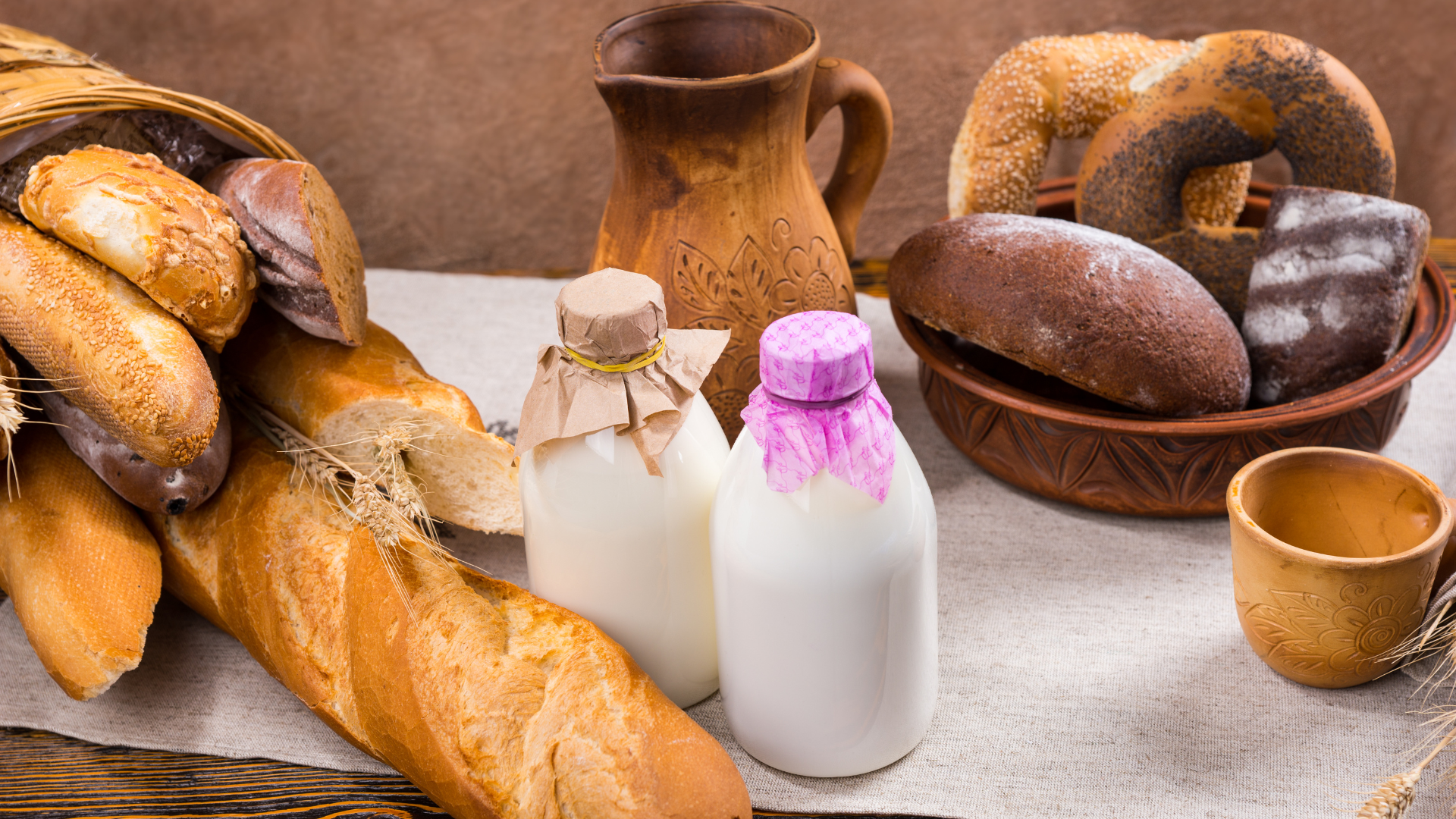
-
French Bread Sauce is a classic recipe that pairs beautifully with meats and is a wonderful comfort food. Here’s a simple and delicious way to make it:
French Bread Sauce Recipe
Ingredients:
2 cups of milk
2 cups of French bread, crust removed and cut into small cubes
1 small onion, peeled and quartered
2 cloves
2 tablespoons unsalted butter
1 tablespoon all-purpose flour
1/4 teaspoon ground nutmeg
Salt and freshly ground black pepper, to taste
Optional: 1/4 cup finely chopped fresh parsley or chives for garnish
Instructions:
Prepare the Milk and Bread:
In a medium saucepan, combine the milk, onion, and cloves. Heat the mixture over medium heat until it just starts to simmer. Do not let it boil. Remove from heat and let it steep for about 10 minutes to infuse the flavors.
Infuse the Bread:
Add the cubed French bread to the milk mixture, stirring occasionally. Let it sit for about 10 minutes to allow the bread to absorb the milk and become soft.
Strain the Mixture:
Remove the onion and cloves from the milk mixture using a slotted spoon or by straining it through a fine-mesh sieve into another saucepan. Discard the solids and return the milk mixture to the heat.
Make the Roux:
In a separate small saucepan, melt the butter over medium heat. Once melted, add the flour, stirring constantly, and cook for about 1-2 minutes until the mixture becomes a light golden color and forms a smooth paste (this is your roux).
Combine and Thicken:
Gradually whisk the warm milk mixture into the roux, ensuring there are no lumps. Continue to cook and stir until the sauce thickens, which should take about 5 minutes.
Season and Serve:
Stir in the ground nutmeg, and season with salt and pepper to taste. If using, stir in the chopped parsley or chives for added freshness and color.
Serve Warm:
Serve the bread sauce warm as a delicious accompaniment to roasted meats, poultry, or even on its own with a side of vegetables.
Enjoy your homemade French Bread Sauce! It’s a versatile dish that adds a rich, comforting flavor to many meals.

Robert Sauce
In a saucepan, melt a quarter of a pound of butter with a spoonful of flour, cooking them together until they turn a rich brown color. Then, finely chop six large onions and a thick slice of cold ham, and add them to the pan with an additional piece of butter. Pour in a small amount of broth or warm water.
Allow the sauce to simmer gently for twenty minutes, skimming off any impurities that rise to the top. Just before serving, stir in a tablespoon of lemon juice or vinegar and a teaspoon of mustard. This sauce pairs especially well with fresh pork or white poultry.
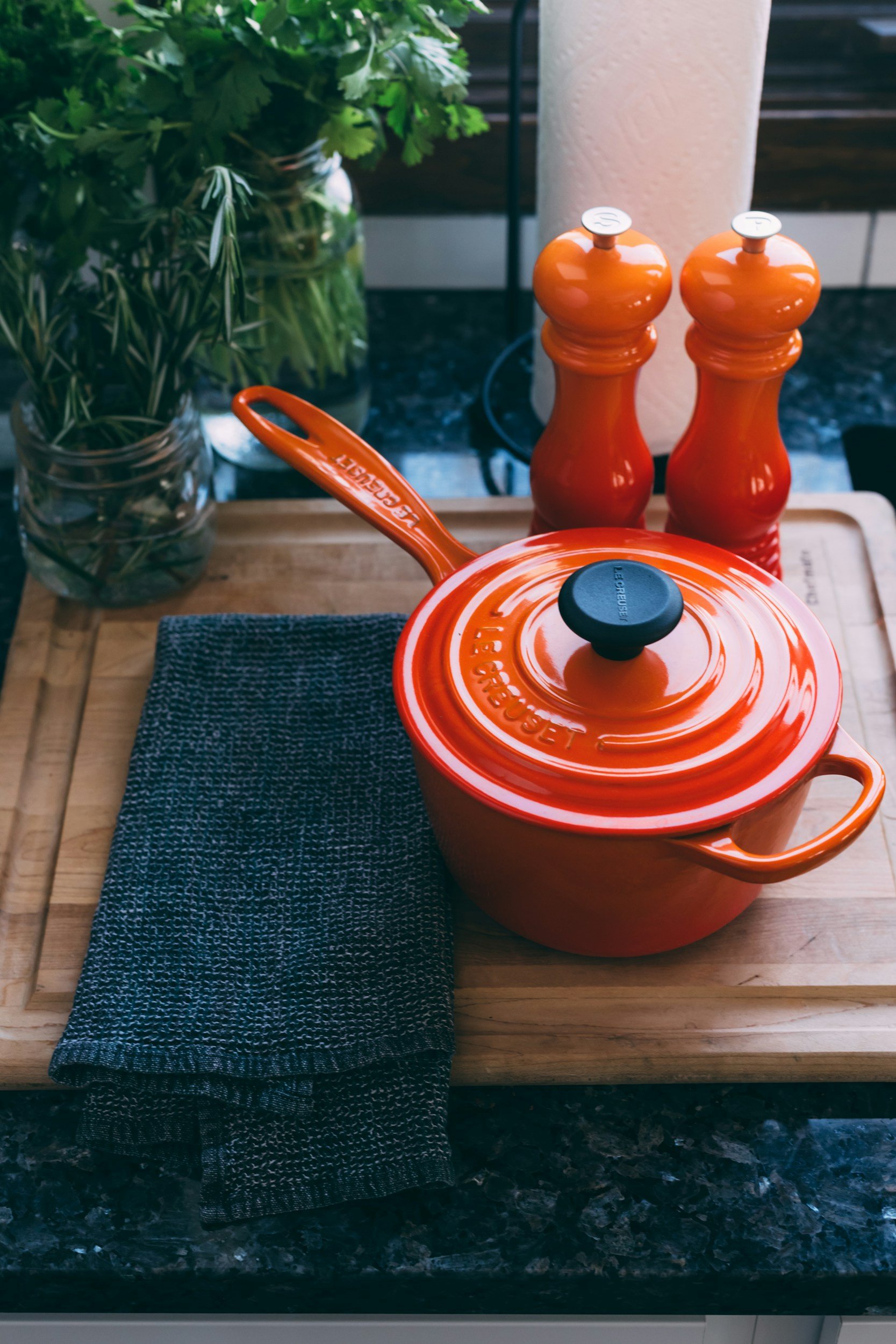
-
French Robert Sauce is a classic French sauce made with onions, mustard, and white wine. It’s a great accompaniment for meats, especially pork and veal. Here's a recipe to make it:
French Robert Sauce Recipe
Ingredients:
2 tablespoons unsalted butter
1 small onion, finely chopped
1 tablespoon all-purpose flour
1/2 cup white wine (dry white wine or dry vermouth works well)
1 cup chicken or veal stock
2 tablespoons Dijon mustard
1 tablespoon whole-grain mustard (optional, for added texture)
Salt and freshly ground black pepper, to taste
1 teaspoon fresh lemon juice (optional, for brightness)
Instructions:
Sauté the Onions:
In a medium saucepan, melt the butter over medium heat. Add the finely chopped onion and sauté until it becomes translucent and lightly golden, about 5-7 minutes.
Make the Roux:
Add the flour to the onions and stir well to combine. Continue to cook for about 2 minutes to form a roux, which will help thicken the sauce. The mixture should be a light golden color.
Deglaze with Wine:
Slowly pour in the white wine, whisking constantly to avoid lumps. Cook for about 2 minutes, allowing the wine to reduce slightly and the alcohol to evaporate.
Add Stock and Simmer:
Stir in the chicken or veal stock and bring the mixture to a gentle simmer. Cook for about 10-15 minutes, or until the sauce has thickened to your desired consistency.
Incorporate Mustard:
Stir in the Dijon mustard and, if using, the whole-grain mustard. Continue to cook for another 2-3 minutes to allow the flavors to meld together.
Season and Adjust:
Taste the sauce and season with salt and freshly ground black pepper as needed. If you like, add a teaspoon of fresh lemon juice to brighten the flavor.
Serve:
Serve the Robert Sauce warm over your choice of meats, such as pork chops, veal cutlets, or roast beef.
This sauce is rich and flavorful, making it a fantastic addition to a variety of dishes.
Cold French Sauces

In addition to the mother sauces, France also boasts a number of famous cold sauces, typically used as dips or dressings.
Mayonnaise: A thick, creamy emulsion of egg yolks, oil, and vinegar or lemon juice.
Derivatives:
Aioli: A garlic-flavored mayonnaise from Provence.
Rémoulade: Mayonnaise with mustard, capers, and herbs, often served with seafood.
Vinaigrette: A simple emulsion of oil and vinegar, often seasoned with mustard, garlic, and herbs.
Commonly used as a dressing for salads or vegetables.
Spinach for Colouring Green
Take three handfuls of spinach and crush them in a mortar to release the juice. Pour the juice into a saucepan and heat it gently until it's about to boil. Remove it from the heat and strain it. You can add a small amount of this spinach juice to any sauce to give it a green tint.
Garlic Butter
Crush two large cloves of garlic into a paste using a mortar. Gradually mix in a piece of butter roughly the size of an egg. You can use a bit of this garlic butter to add a garlic flavor to sauces. Additionally, some people enjoy having a piece of garlic butter served alongside roast meat.
Hazelnut Butter
After scalding and blanching some hazelnuts, crush them into a paste using a mortar, gradually mixing in a small amount of butter. This mixture is excellent for pairing with wildfowl or for enhancing the flavor of delicate sauces.
Cold Sauce for Fish
Finely chop equal parts of parsley, chervil, tarragon, chives, and burnet, and pound them in a mortar along with two hard-boiled egg yolks. Strain the mixture through a sieve, then combine it on a plate with four tablespoons of olive oil, two tablespoons of vinegar, and two tablespoons of mustard. Stir the mixture with a wooden spoon.

French Sauces and Wine Pairing
In French cuisine, the sauces not only enhance the flavor of the dish but also complement the wine pairing. For example:
Creamy sauces (like béchamel or hollandaise) pair well with rich, buttery white wines (such as Chardonnay).
Tomato-based sauces (like Sauce Tomate) work beautifully with lighter red wines (such as Pinot Noir).
Herb-infused sauces (like Béarnaise) can be complemented by more aromatic whites (like Sauvignon Blanc).
Other Iconic French Sauces
Some sauces are not derived from the mother sauces but are still staples in French cuisine.
Sauce Béarnaise: A variation of hollandaise, made with a reduction of vinegar, shallots, and tarragon. It’s a perfect pairing for grilled steak or fish.
Sauce Gribiche: A cold egg-based sauce made with hard-boiled egg yolks, mustard, capers, pickles, and herbs. It’s often served with cold meats or vegetables.
Sauce Périgueux: A luxurious sauce made with Madeira wine and truffles, typically served with meats like beef or foie gras.
Sauce Nantua: A creamy seafood sauce made with crayfish butter and used with shellfish dishes.
While classic French cuisine still holds strong, many chefs are innovating with nouvelle cuisine, which emphasizes lighter sauces, smaller portions, and a focus on fresh, quality ingredients. Contemporary French chefs like Alain Ducasse and Joël Robuchon have pushed boundaries, combining traditional techniques with global influences.
In summary, French cuisine is known for its artistry, precision, and an emphasis on ingredients, techniques, and tradition, making it a cornerstone of global culinary culture.
Sauce Culture in Modern French Cuisine
In modern French cuisine, the culture of sauces has evolved significantly while maintaining its deep-rooted traditions. Today, French chefs have adapted classic sauce techniques to suit contemporary tastes, focusing on lighter, fresher flavors, healthier ingredients, and innovative pairings. However, the mastery of sauces remains a hallmark of French culinary artistry. Here’s how sauce culture has transformed in modern French kitchens:




